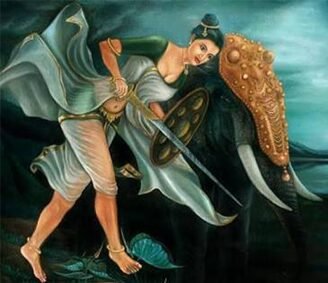The Grandeur of Gangamma Jatara: A Festival of Resilience and Renewal
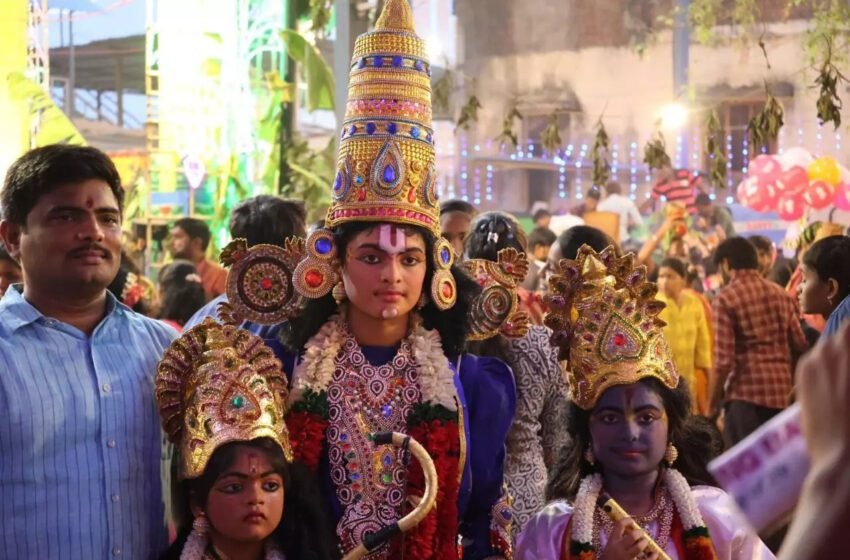
If you come from the southern region of India, you might have heard about The Gangamma Jatara, it’s a celebration of the most colourful festival ever celebrated especially in the southern region. We could see it in the states such as Andhra Pradesh, Karnataka, and Telangana. This celebration has been dedicated to the goddess Gangamma Talli uniting multiple communities. This is a shared cultural expression and reverence for a goddess who is believed to protect her devotees from evil and bless them with prosperity.This festival has even been referred to in movies, like Pushpa 2.
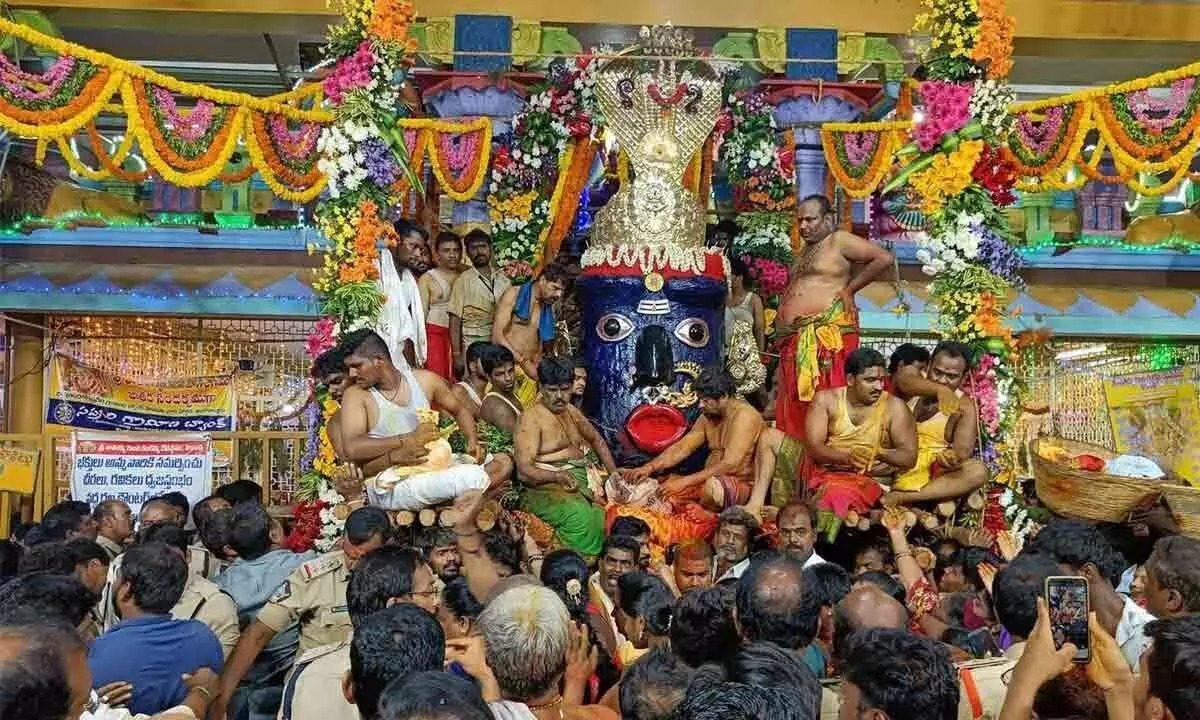
Historical and Mythological Background
Gangamma is Nada Devathe or Local deity. Gangamma was idolised for her power and protective nature. She is often believed to be the younger sister of Lord Venkateswara, one of the most notable deities, and the two are worshipped together, with Gangamma considered to be his protective sibling. In Tirupati, the goddess is thought to have originated in the town of Avilala, and her worship is integral to the local spiritual practices.
It is widely believed that she was the one to slay a local perverted chieftain in order to protect the modesty of women, marking her as a fierce, feminine protective figure. According to legend, a local chieftain called palegadu misbehaved with multiple females , sexually harassed them.This led to divine intervention from Gangamma,
His acts had angered her to take an oath of vengeance. Palegadu, fearing her divine power, went into hiding. Gangamma assumed various disguises including that of male and females, to incite him out of his hiding. On the last day, she appeared as an attractive damsel, enticing Palegadu to come out of hiding. She then killed him, restoring justice and protecting the women of the community . Grateful for her bravery, the people of Tirupati began worshipping Gangamma as a symbol of woman power.
This myth is a key driving force in the festival’s symbolism and its spiritual essence, with devotees honouring her as a goddess who offers protection and justice. The festival is often seen as a tribute to this act of valour and to her role as a guardian deity.
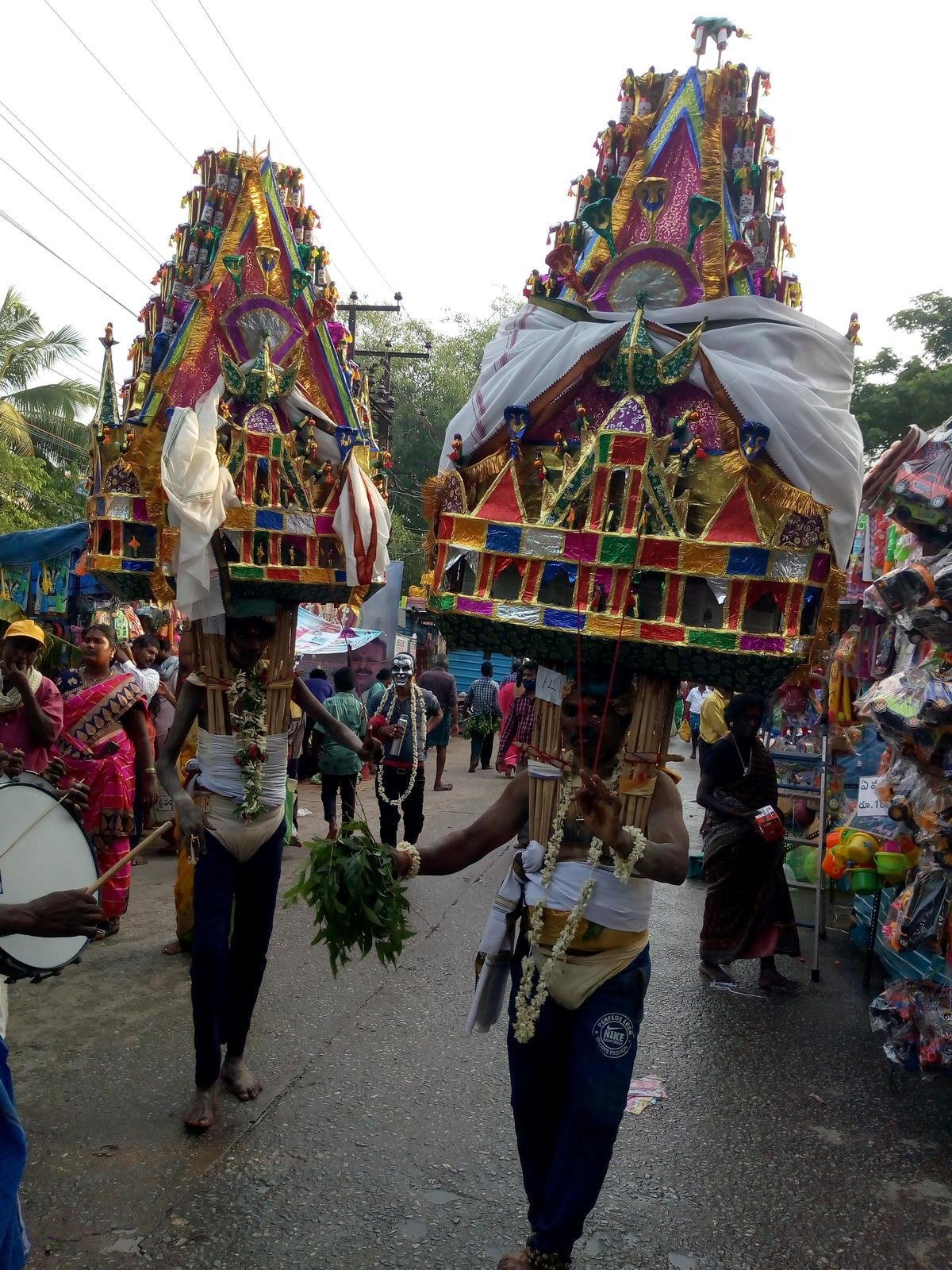
Origin of the Festival
Gangamma is fair and the festival is held in various places across India. The Gangamma Jatara is a very famous local festival for the people of Tirupati. It is done every year in May. As the Gangamma temple was on the banks of Thathaya gunta, the temple is famously known as “Tataiahgunta Gangamma Temple”
The origin of Gangamma Jatara is believed to have been practised for centuries, While its early records remain unclear, it is believed that the festival was introduced as an expression of gratitude to Gangamma for her protection of the people. It reflects the spirit of the local community and their connection with the goddess, who embodies Shakti or the feminine powerful energy.
Over time, it evolved from a localised to communal celebration, incorporating local customs and folk traditions, and eventually became one of the most important events in the region.
Key rites of the Gangamma Jatara
The Gangamma Jatara is not just a religious festival but also a commemoration of Gangamma’s victory over evil. The festival also showcases Tirupati’s rich cultural heritage through vibrant rituals and ceremonies.
- Formal Announcement (Chatimpu):
Chatimpu, an official midnight declaration, marks the start of the celebration. Men circulate the old town, beating dappus (drums), and exhort locals to stay until the celebrations are over.
Priests tie a holy thread (Vadibalu) to the Viswaroopa Sthambam in front of the temple. The temple’s porch usually has a huge clay image of Goddess Gangamma, to which devotees present pongal, sarees, turmeric, and kumkum.
- Sacred Clay Breaking Ceremony and sacrifice
On the final day, the clay idol is ceremoniously smashed at an auspicious moment. Devotees eagerly collect pieces of the clay, considering them sacred for worship or consumption after mixing them in water.
Officially, there is a ban on animal sacrifices, but some devotees still carry out these practices, driven by tradition and personal faith. Local authorities and temple committees often discourage these acts to align with evolving societal norms.
Some communities have moved towards symbolic offerings, such as coconuts or clay figures, as an alternative to animal sacrifices. These are seen as a way to honour tradition without engaging in the act of taking life.
- Sapparalu (Pagoda-like Towers):
One of the most unique and striking rituals associated with the festival is the carrying of the Sapparalu, or pagoda-like structures. Devotees carry these decorated towers on their shoulders, often as a form of vow fulfilment. The Sapparalu are traditionally constructed from wood or metal, and their decorative elements represent the goddess’s divine protection.
- Men Dressing as Women:
On the final day of the festival, a distinctive ritual takes place where men dress as women and offer prayers to the goddess. This ritual has historical roots connected to the mythological story of Gangamma’s valour, and today it has evolved into a celebratory and playful expression of devotion. Men wear traditional women’s clothing, don wigs, and apply makeup, symbolizing the goddess’s transformation and her ability to protect all, regardless of gender.
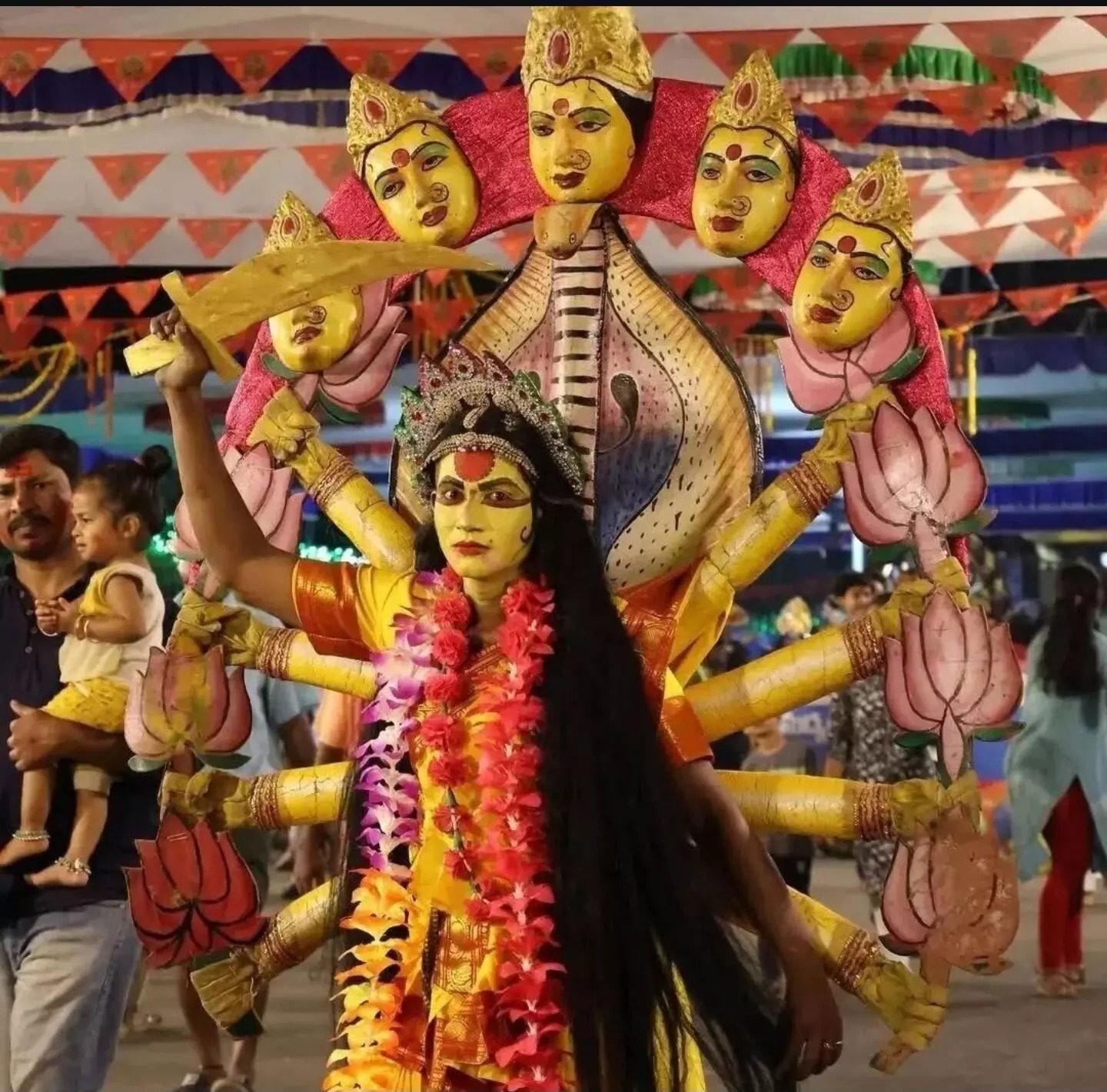
- Traditional Folk Music and Dance:
The festival is also marked by a lively atmosphere, filled with the sound of folk songs, drum beats, and dances. Devotees perform traditional dances such as the Kolattam and Dappu to express their joy and reverence. The rhythmic beats of drums, accompanied by the vibrant dances, create a lively spectacle that is both spiritually uplifting and culturally enriching.
- Local Communities and Devotees:
The Gangamma Jatara is not just a religious event; it is a community celebration. The festival unites people from all walks of life, transcending social and economic boundaries. Communities gather to offer prayers, share food, and participate in various rituals, making it a time for social unity and collective devotion.
Festival’s location
The Gangamma Jatara is celebrated across multiple towns in the undivided Chittoor district, including Tirupati, Chittoor, and Palamaner. It takes place annually on May 13–15, uniting locals and visitors in communal devotion and celebration.
The Tataiahgunta Gangamma Temple:
Named after the temple’s original location by the Thathaya Gunta (Tank), is the temple where the celebration takes place in Tirupati
While the Tataiahgunta Gangamma Jatara remains a cornerstone of Tirupati’s cultural and religious identity, modernization has significantly altered its practices and rituals.
Temple Renovations and mordenization
The goddess was earlier worshipped under fig and neem trees in a small, open shrine accessible to marginalized communities. Over time, the temple underwent renovations funded by the Tirumala Tirupati Devasthanams and the Andhra Pradesh Department of Temple Endowments. Today, the deity is placed in a colourful concrete structure with ticketed entry. This can be seen all over India with various different temples. The deity was Traditionally served by Mudaliar caste, but the temple is now managed by multiple Brahman priests, marking a shift in its rituals and administration.Offerings like non-vegetarian food, once integral to Gangamma’s worship, are now limited to the annual festival, reflecting the Sanskritization of temple practices.
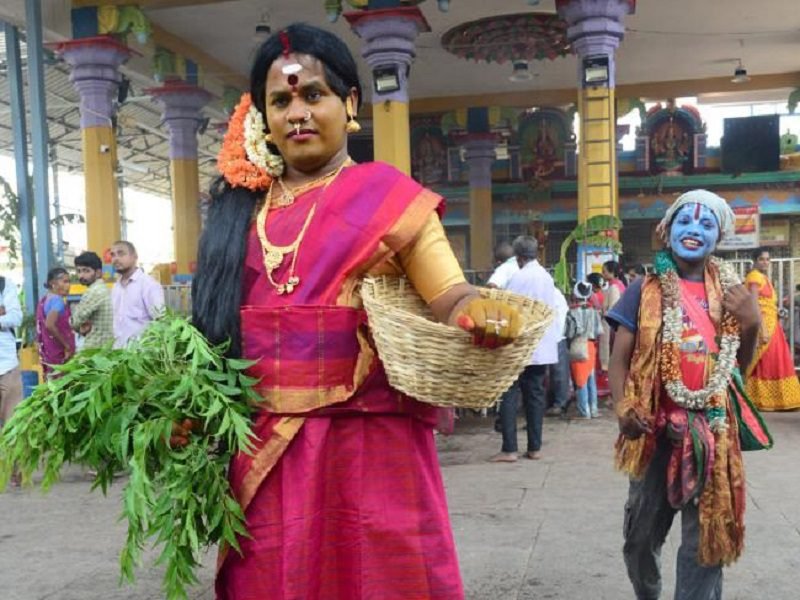
Theological scholars pointed out the goddess’s changing identity, as her fierce, folk roots are being replaced by a calm, Puranic-like image associated with mainstream Hindu deities.
Voices from the Community:
- Journalist Mallarapu Venkata Subbaiah lamented the diminishing connection between Gangamma and the local community, pointing to the reduced practice of traditional rituals and the gradual loss of the goddess’s original identity.
- Devotee Gundala Gopinath Reddy, who has participated in the Jatara for four decades, highlighted the dwindling number of attendees and the decreasing adherence to rituals like animal sacrifices.
- Retired professor Peta Srinivasulu Reddy expressed nostalgia for the simpler days when his grandfather, a villager, directly interacted with the goddess at an open shrine. He noted that modernization has alienated traditional worshippers. Religious scholar Joyce Burkhalter Flueckiger documented the festival’s transformation, particularly the replacement of female caretakers by male Brahman priests, which she views as part of a larger trend toward institutionalized worship.
Cultural Relevance and Gender Dynamics
The festival offers a temporary space for subverting gender norms, with men embodying feminine forms to honour the goddess’s strength. The stri vesham (female attire) represents a transformative space where aggressive masculinity is destroyed, and a new form of masculinity one that recognizes and respects feminine power is explored.
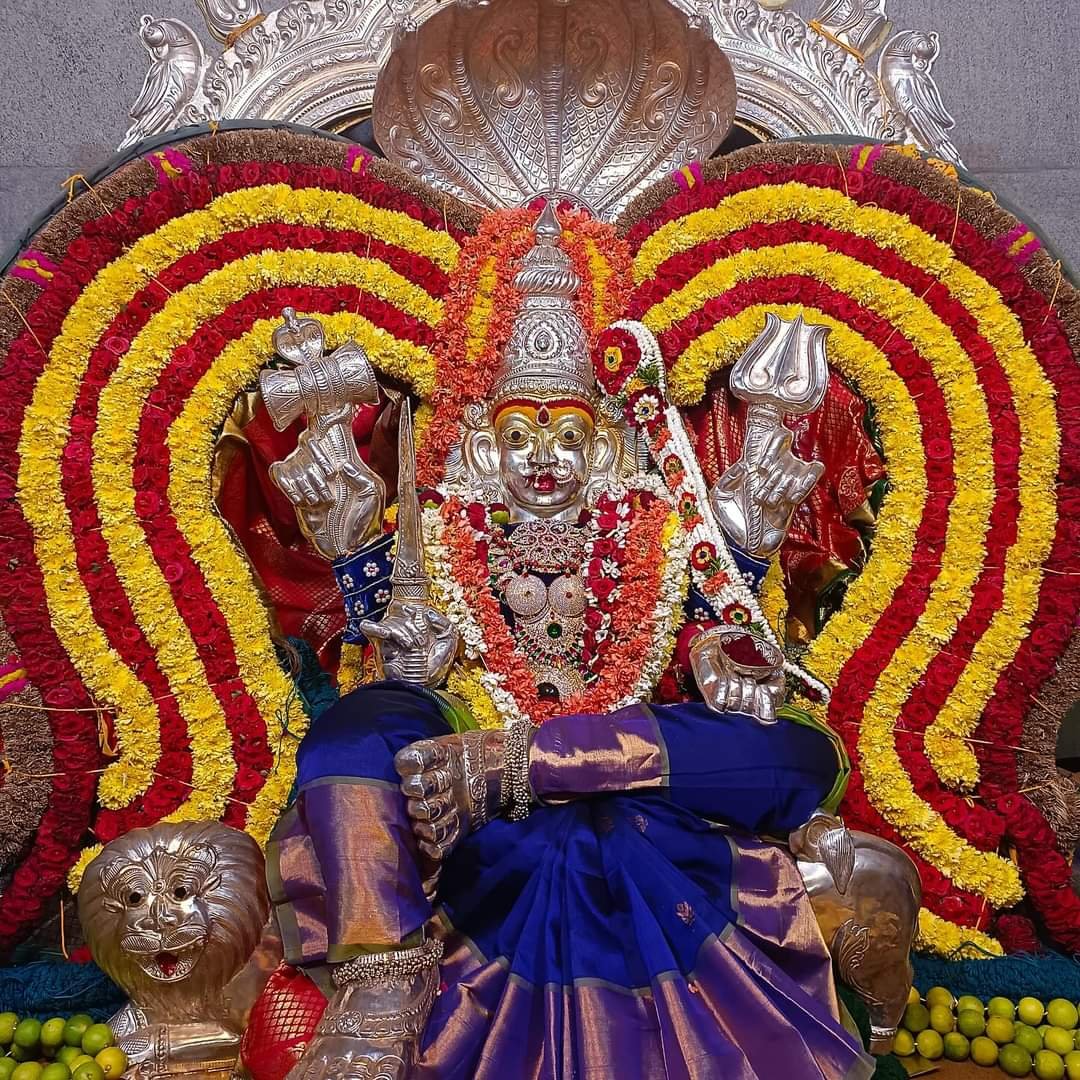
Gangamma Jatara Across Different Regions
While the Gangamma Jatara is most widely celebrated in Tirupati, the festival also has significant observances in other regions across Southern India:
- Andhra Pradesh: In places like Tirupati, Tataiahgunta, and Rayalaseema, the festival is a major cultural event, with the rituals and processions taking place in grand style. TheTataiahgunta Gangamma Temple being the epicenter of the festival, rituals here are distinct, like tying the Vadibalu and crafting the massive clay idol.
- Karnataka: Karnataka saw this ceremony in smaller communities of Bangalore and Mysore .here Gangamma in a more localized but equally passionate manner.
- Telangana: In areas like Hyderabad and Warangal, smaller-scale celebrations take place, often with ritual prayers and community gatherings. The celebrations are typically more subdued, involving ritual prayers, traditional music, and collective worship. goddess’s stories are kept alive through community gatherings rather than elaborate processions.
- Tamil Nadu: While not as widespread as in Andhra Pradesh, Gangamma is honoured in some regions, with smaller temples and local communities participating in the worship of the goddess.
Conclusion
The Gangamma Jatara is a festival that blends devotion, valour, and tradition. It serves as a reminder of the goddess’s protective nature and her role as a figure of justice and righteousness. Through its rituals, festivities, and cultural expressions, the Gangamma Jatara not only honours the goddess but also strengthens the bonds within the community. For those who participate, it is a time of spiritual renewal, cultural pride, and joyful celebration.
